Mardi Gras World is a warehouse down by the river that is the base of operations (and storage) for the family business that builds the floats (and hosts many of the parties) for Krewes that put on parades during Carnival season.
The basics: Carnival season runs from Epiphany to Fat Tuesday. We generally think of Mardi Gras (French for “Fat Tuesday”) as the last day of Carnival season (which, in fact, it is) but it’s important to remember that there were 71 parades during Carnival season this year.
A Krewe is like a fraternity. People pay to join and pay dues to belong. The Krewe has two basic functions: A parade and a ball. Each Krewe produces a parade that has a minimum of 14 floats and 7 marching bands and then throws a ball to celebrate. Many Krewes are smaller organizations with modest events. Then there are the “Super Krewes” that spend tens of thousands of dollars on their events. The biggest of these begin working on their parade themes and floats 18 months in advance.
The Kern family (who own Mardi Gras World) keep an inventory of “props” (figures) that have been used in the past. Many of these are repainted, refurbished and reused in future floats. Other props are developed from scratch for a specific parade.
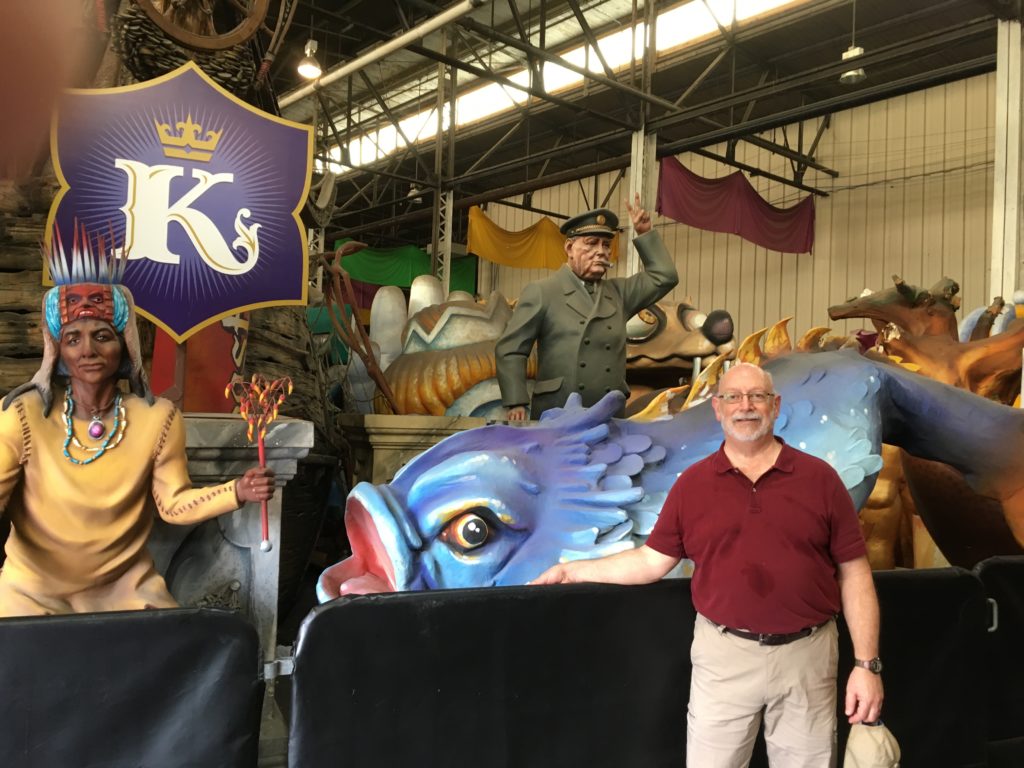
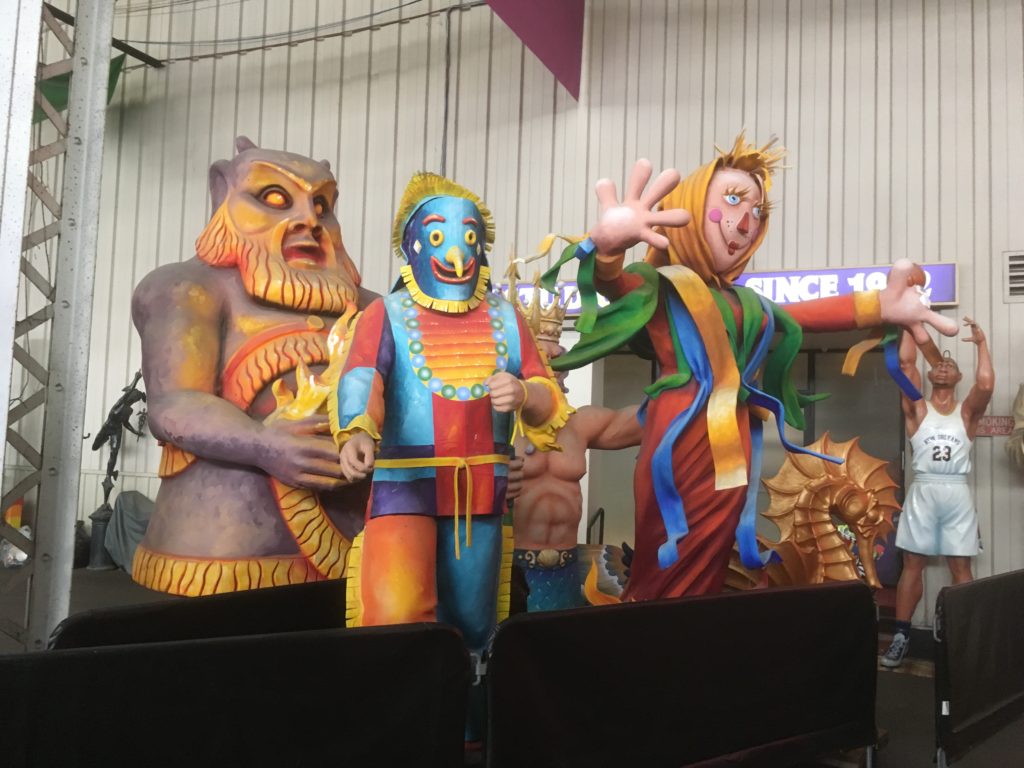
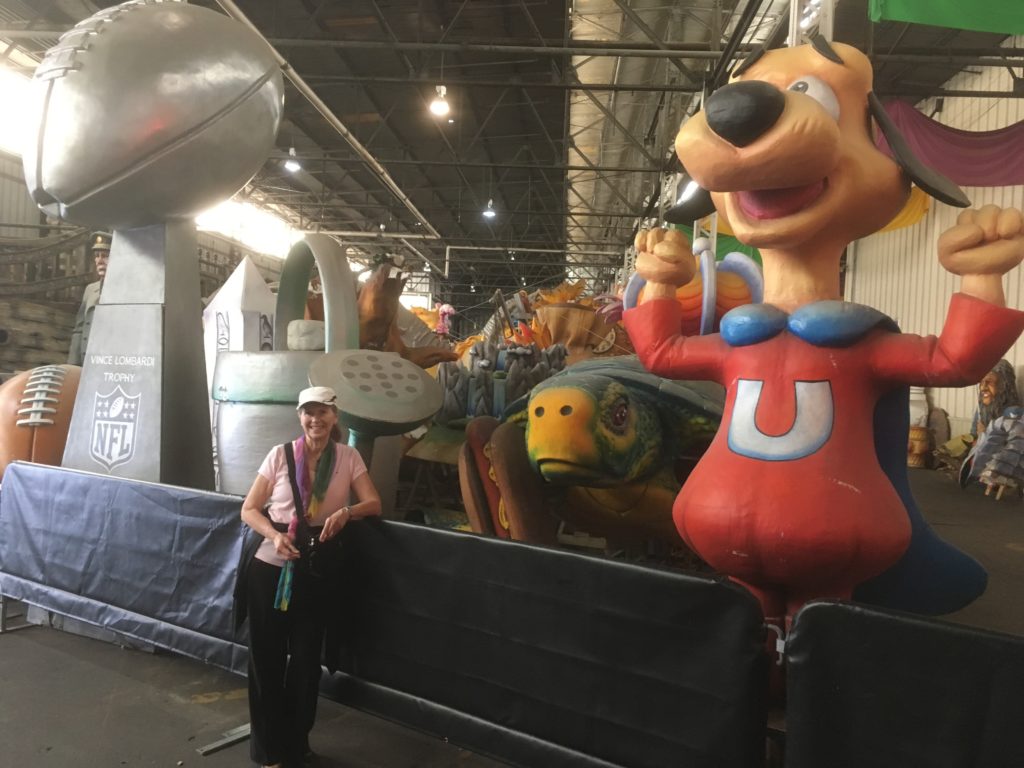
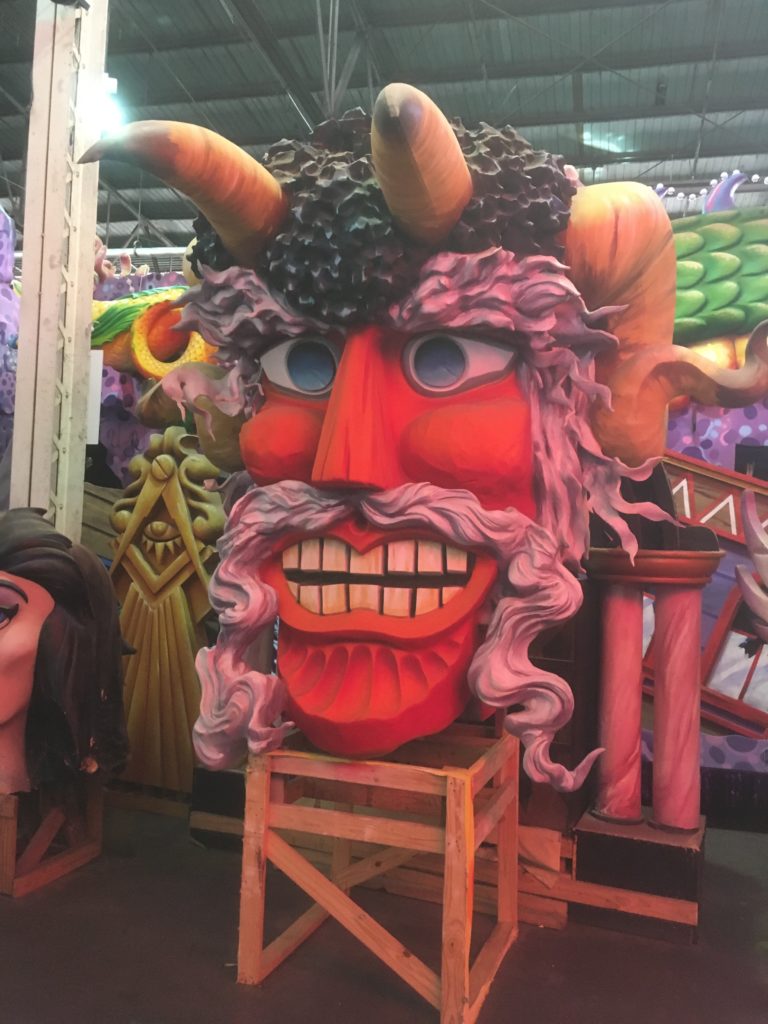
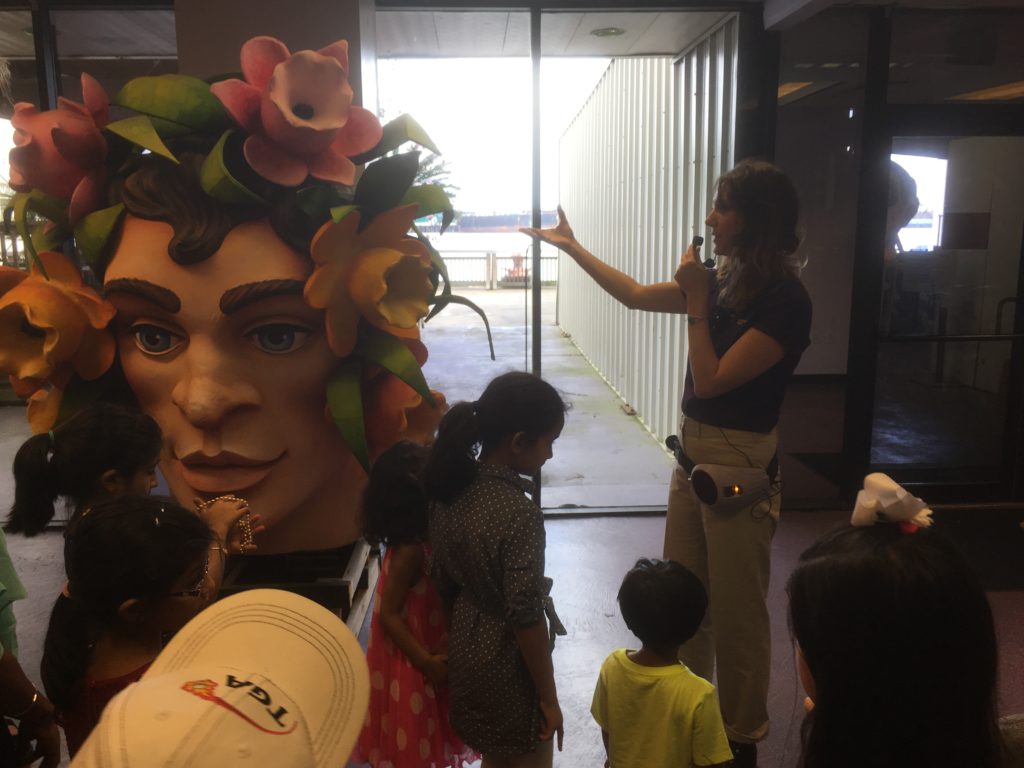
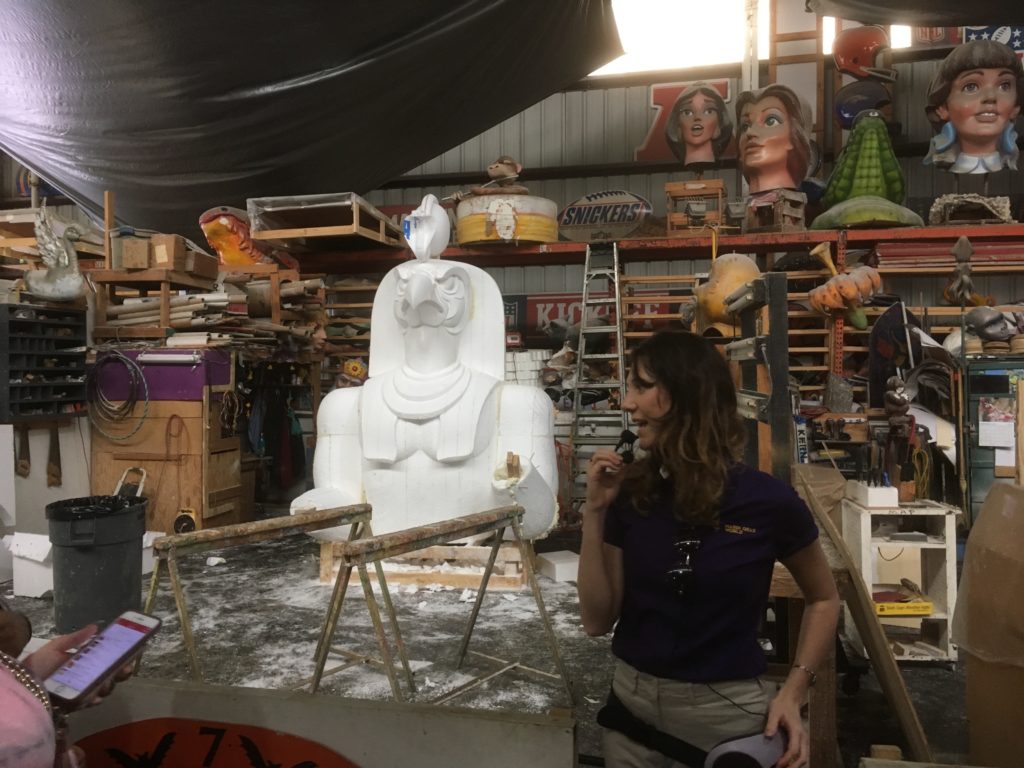
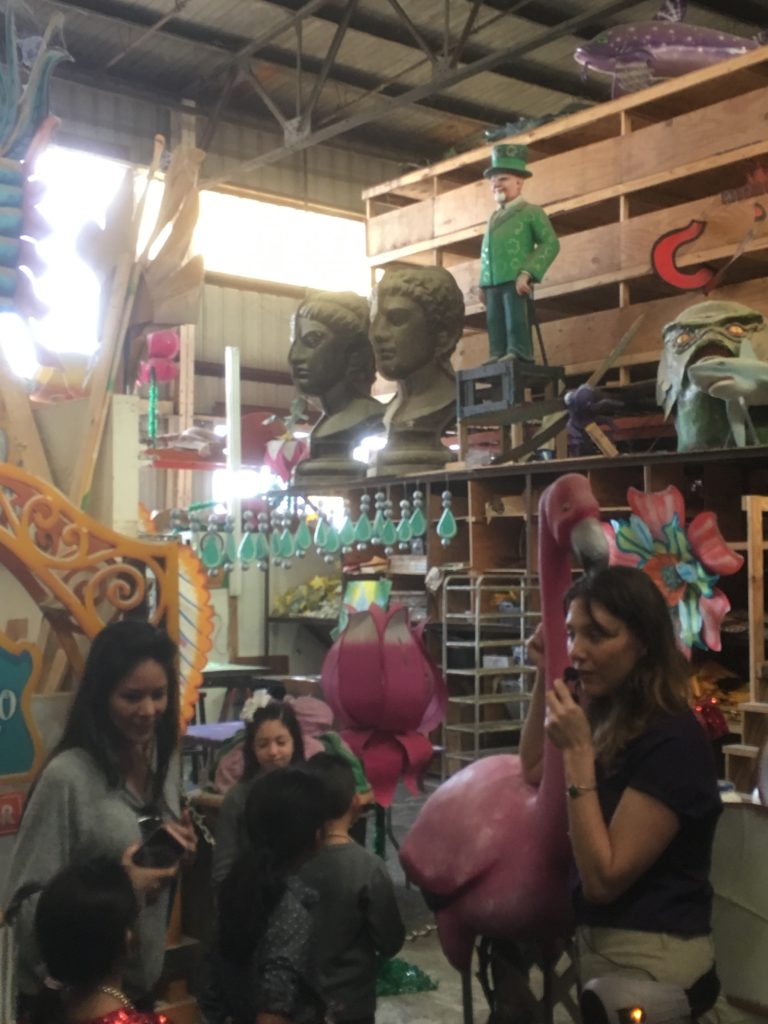
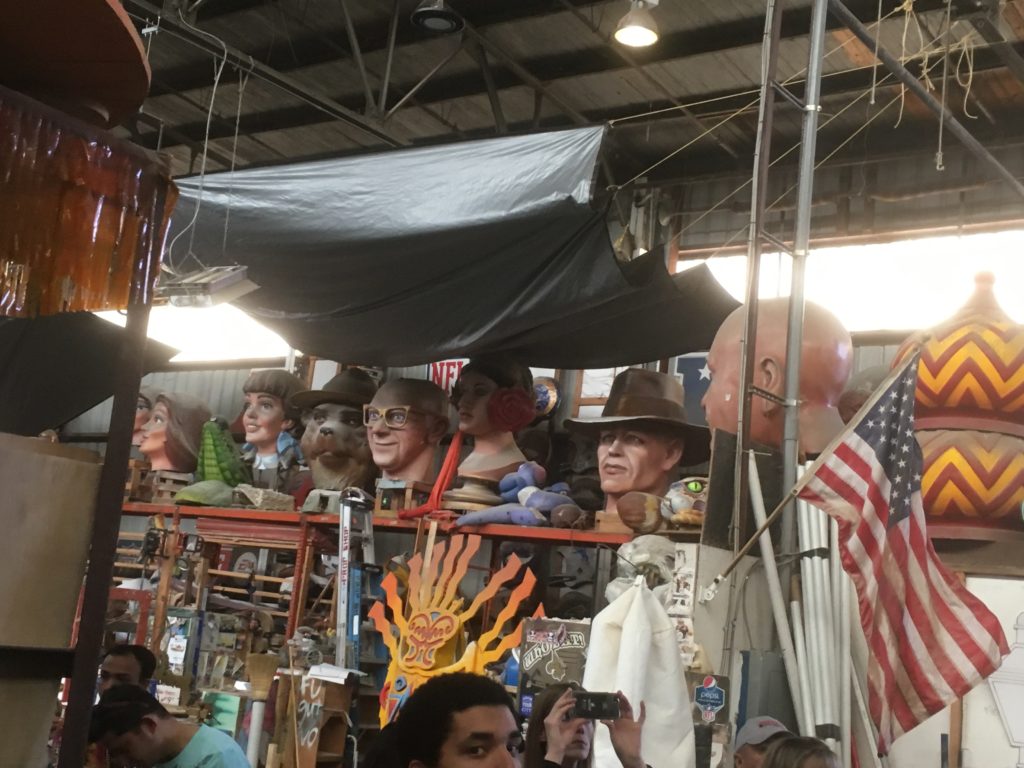
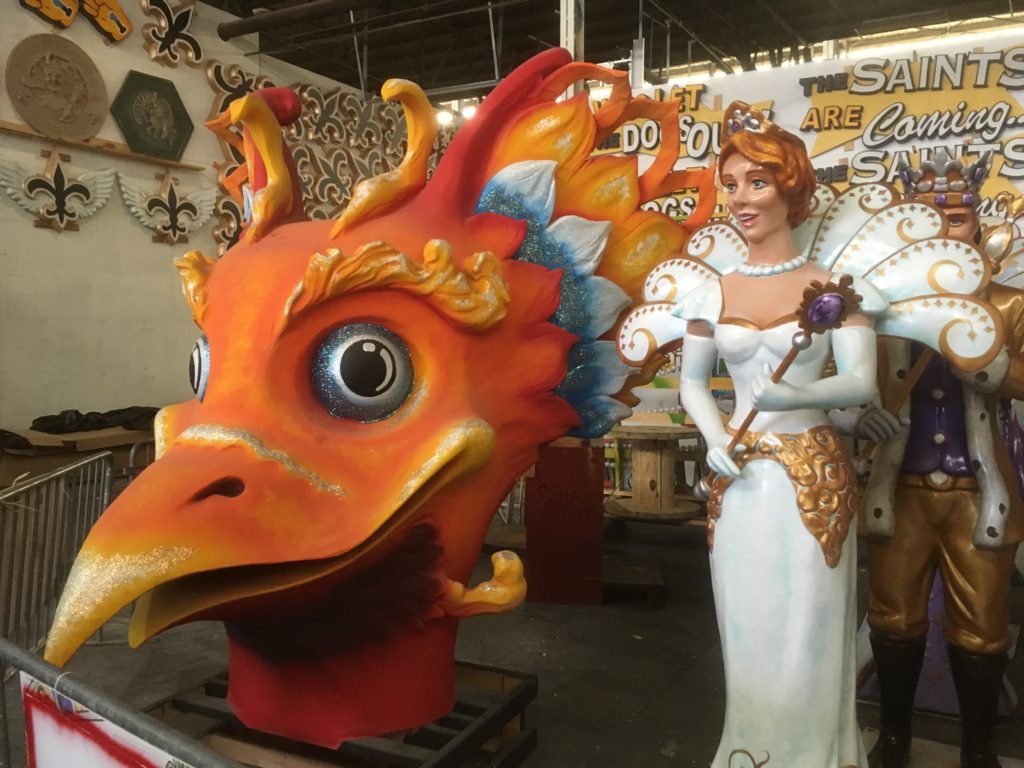
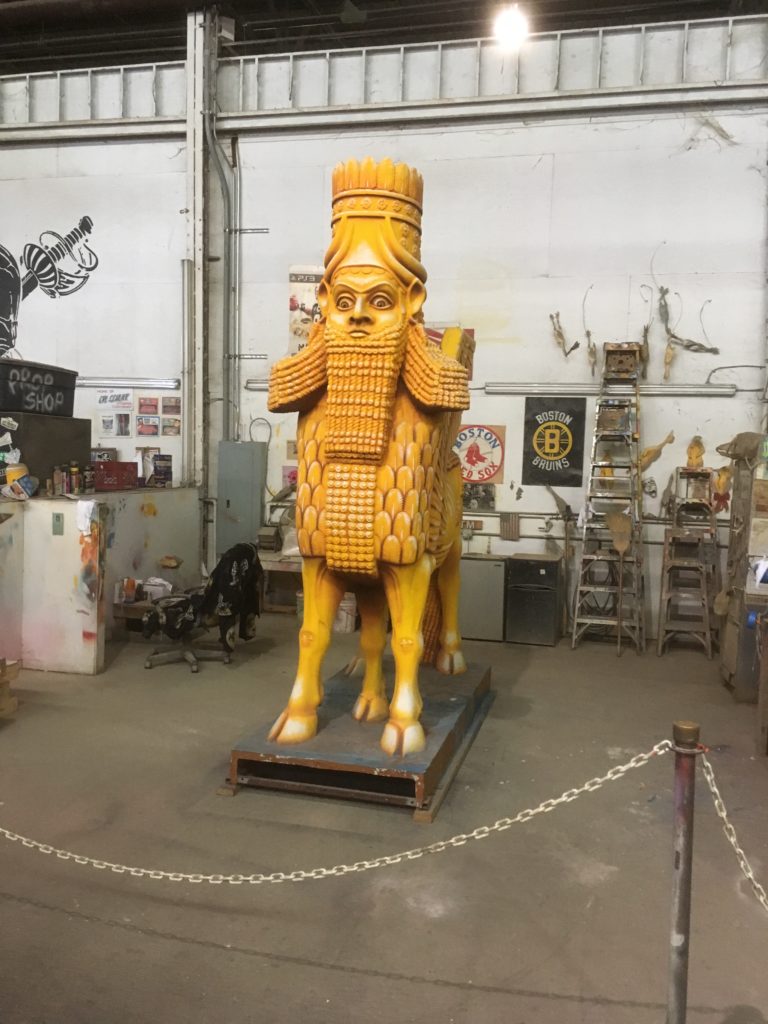
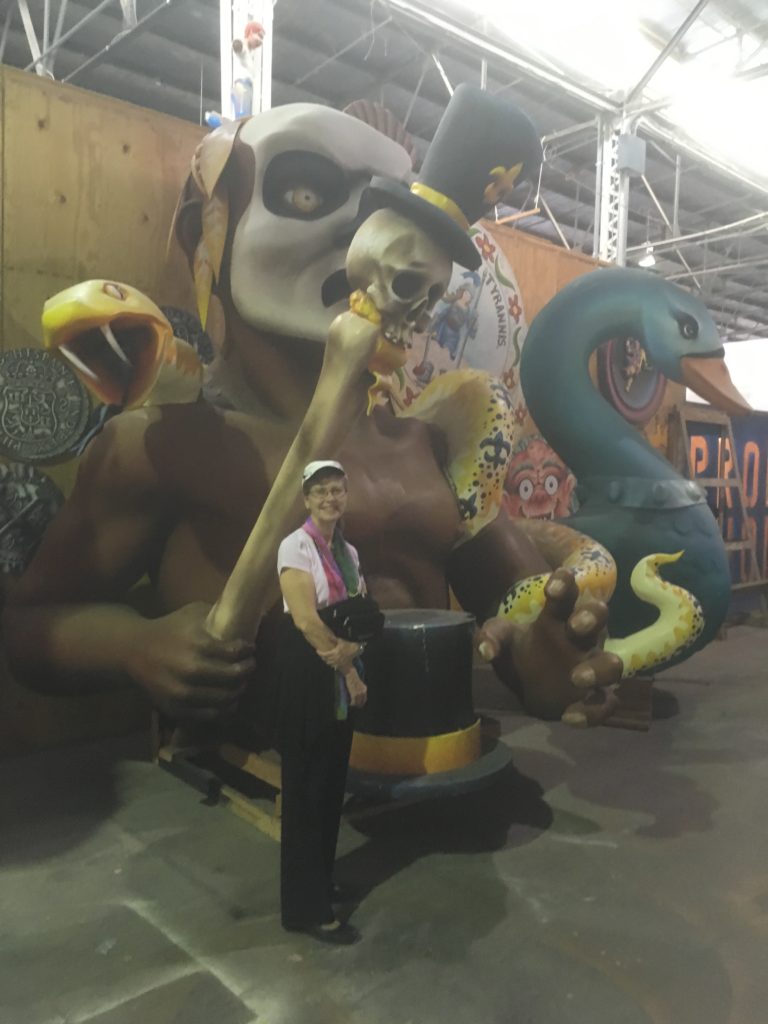
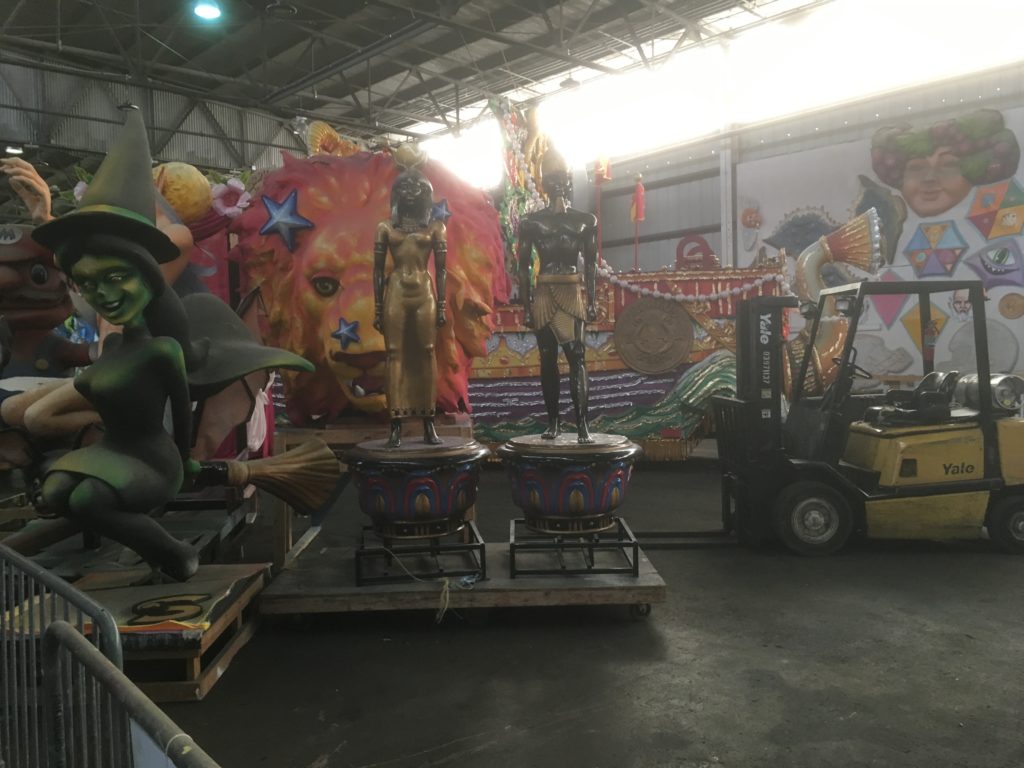
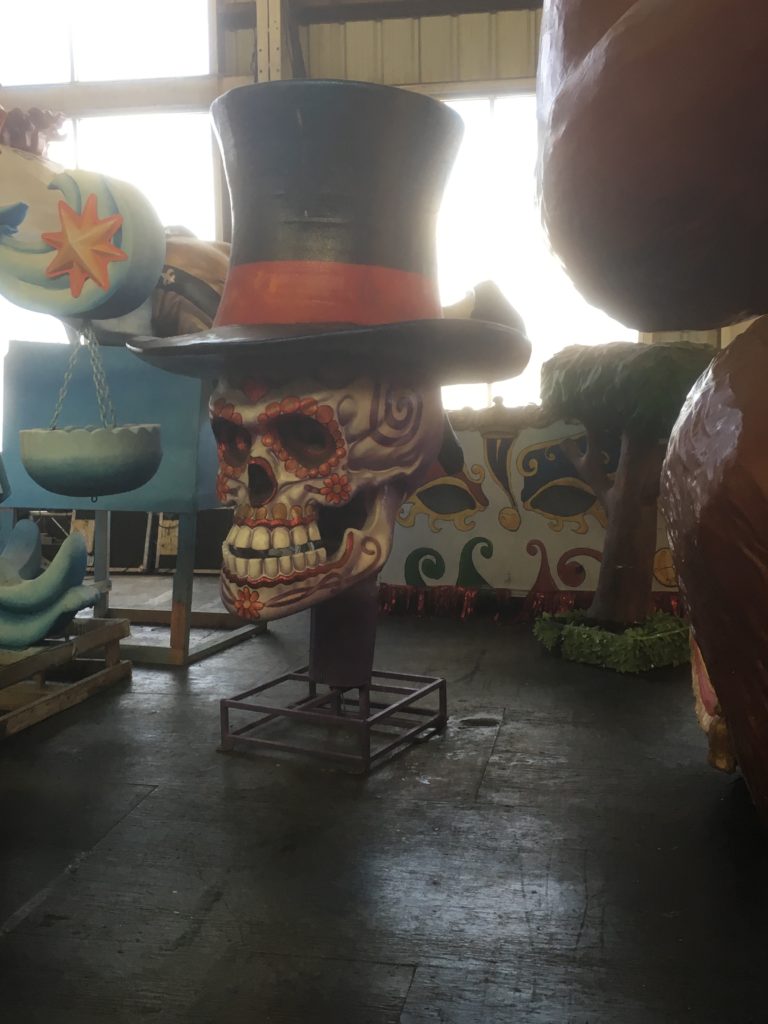
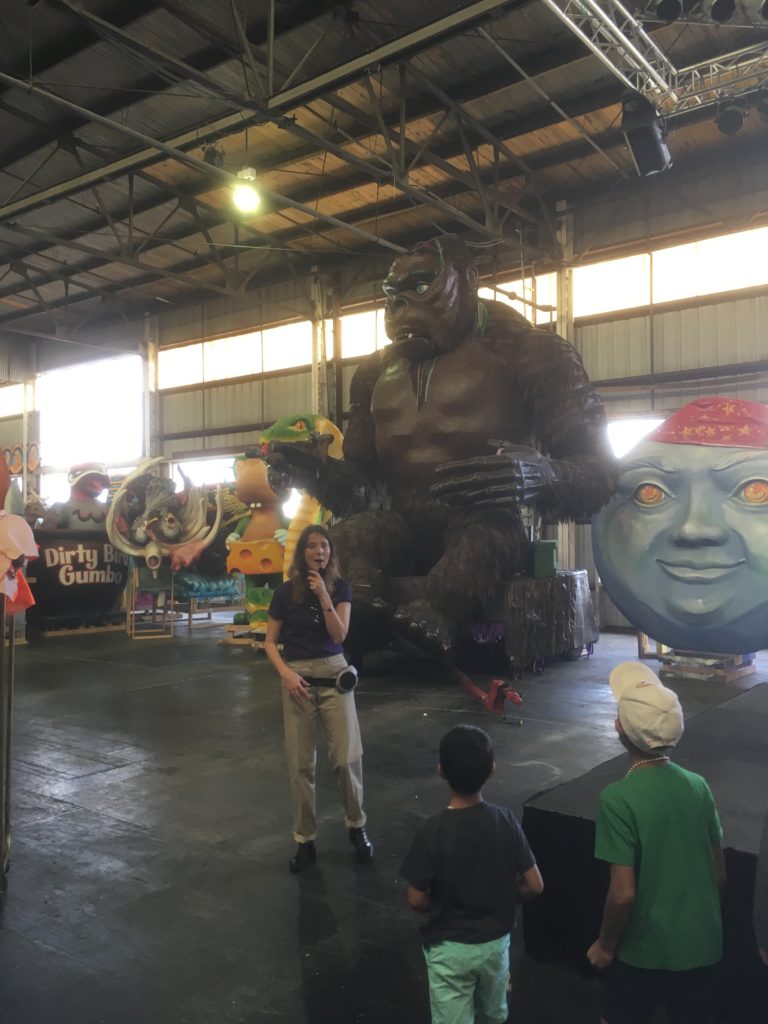
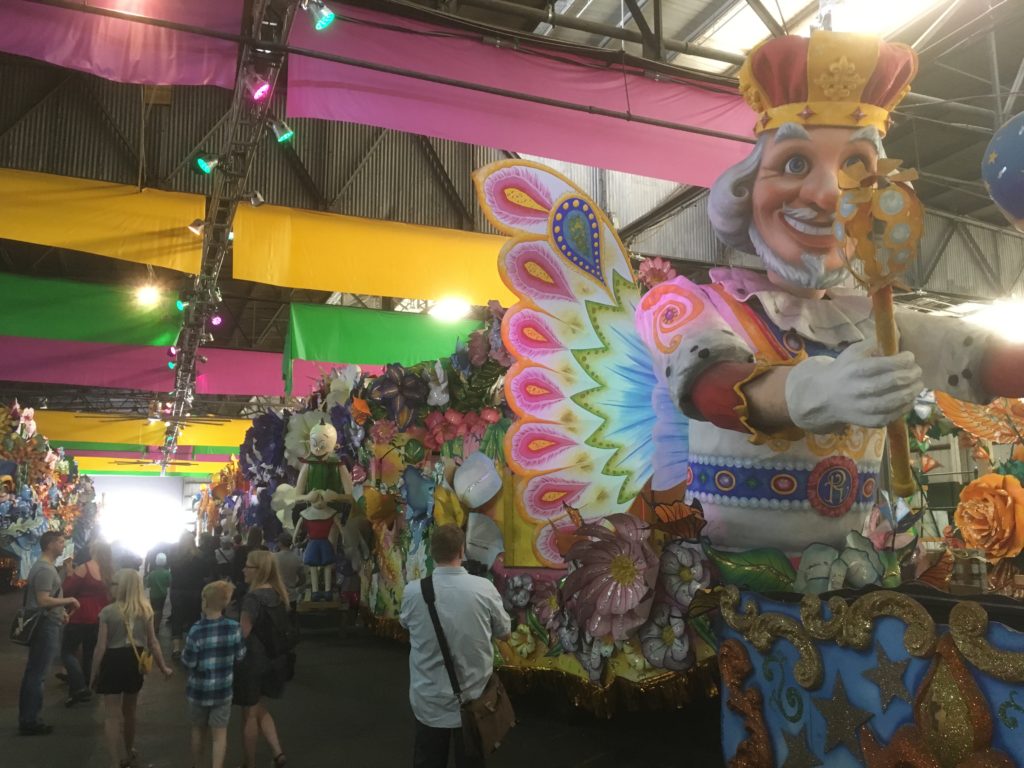
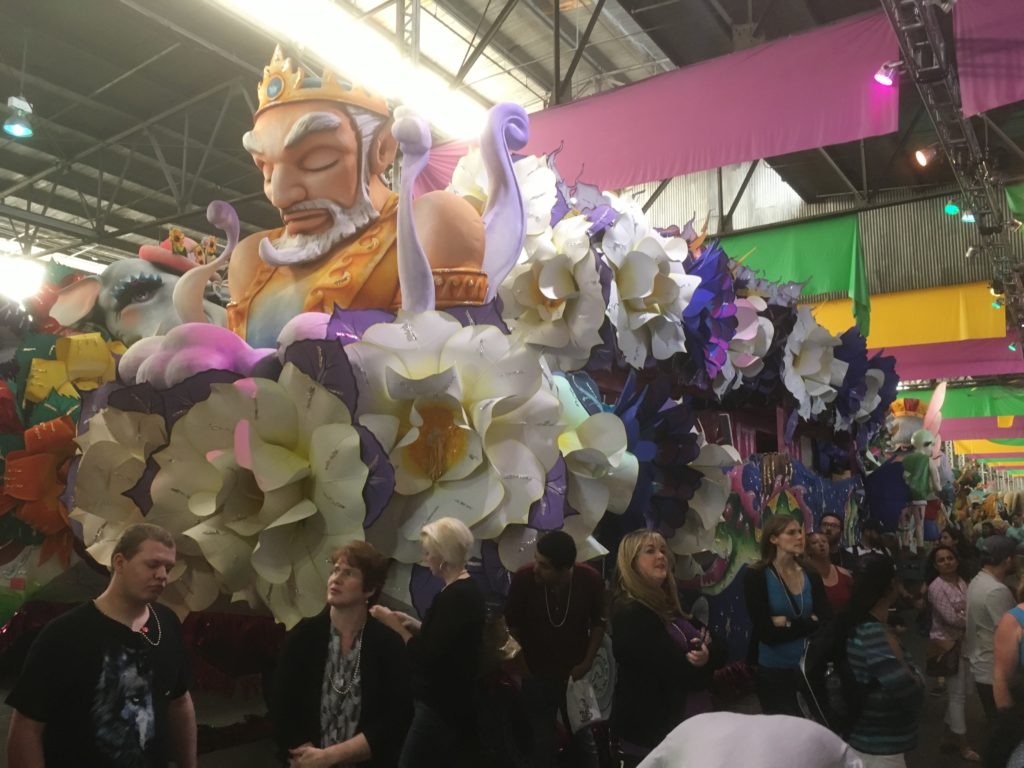
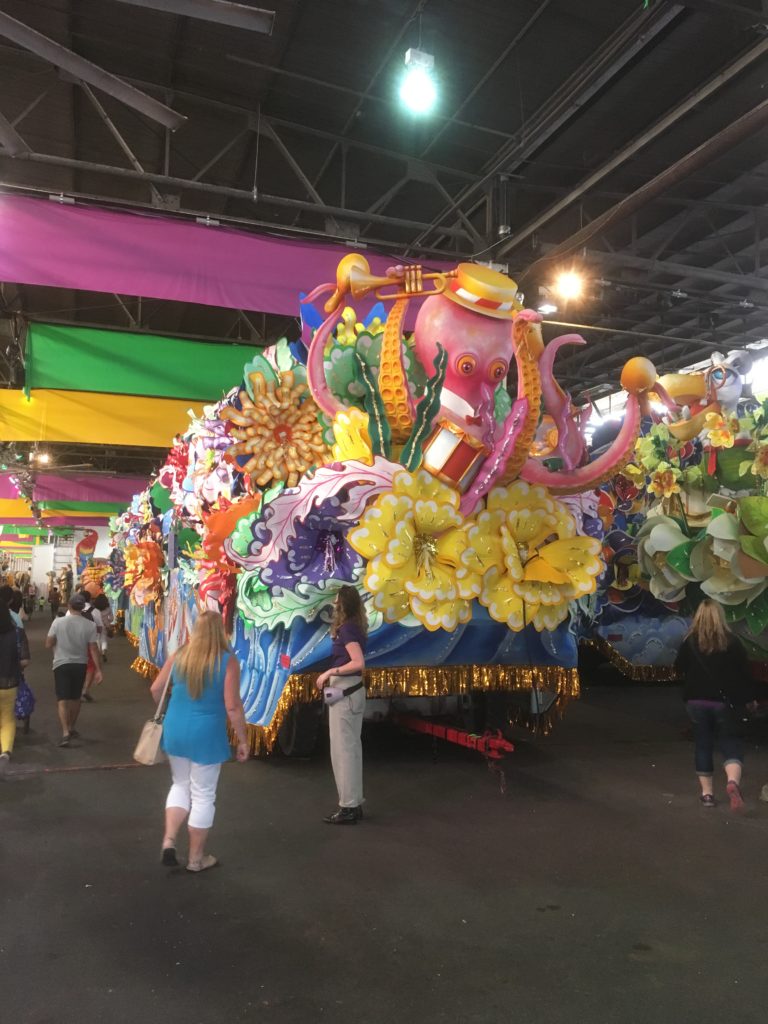
Finally…
The newest tool for figure creation is a computer-driven mill
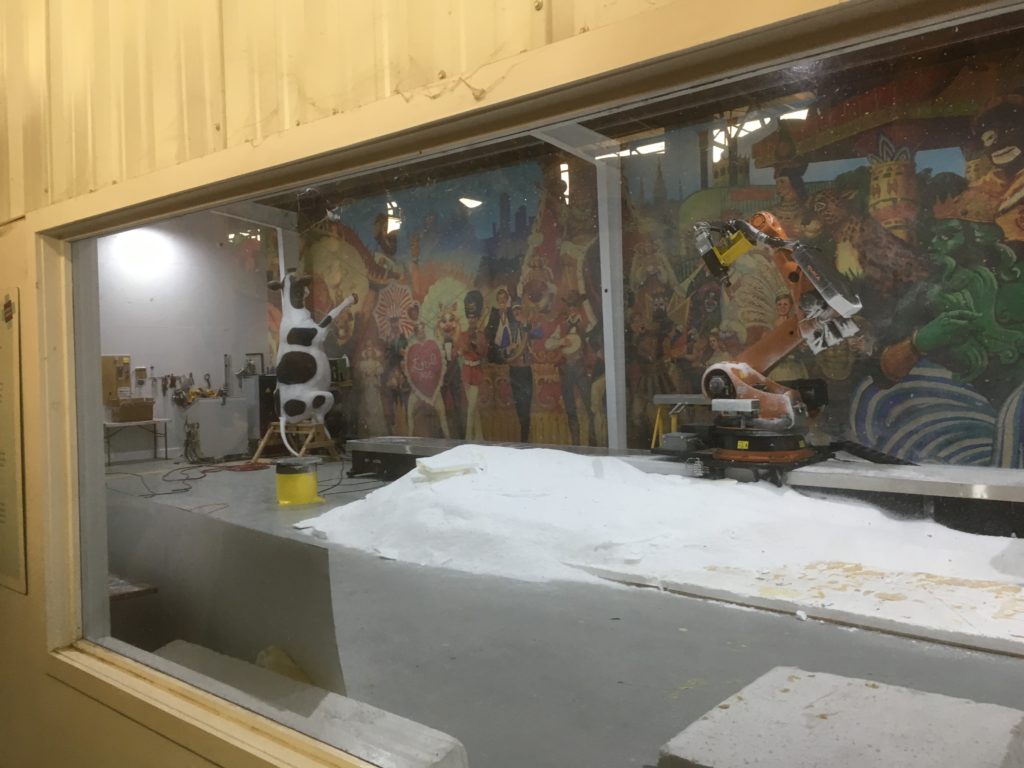
The mill is on the right. The (fiber glass) cow on the left is ready to be shipped to a billboard near you. This company also runs a “corporate business.” They make the cows for the Chick-fil-a billboards as well as figures for Disney and major Las Vegas hotels.
That’s our trip to Mardi Gras World. Amazing!
WOOOOWWWWWW so cool. Jealous
Very cool!!!